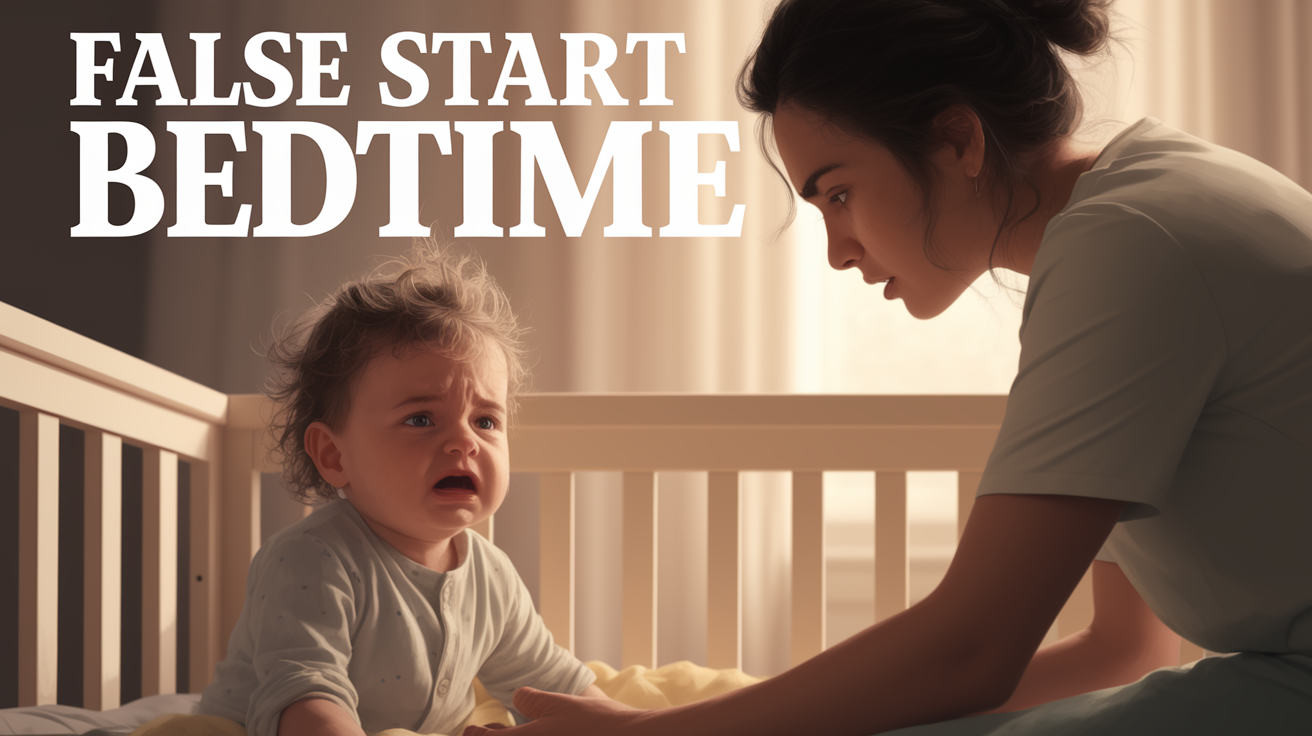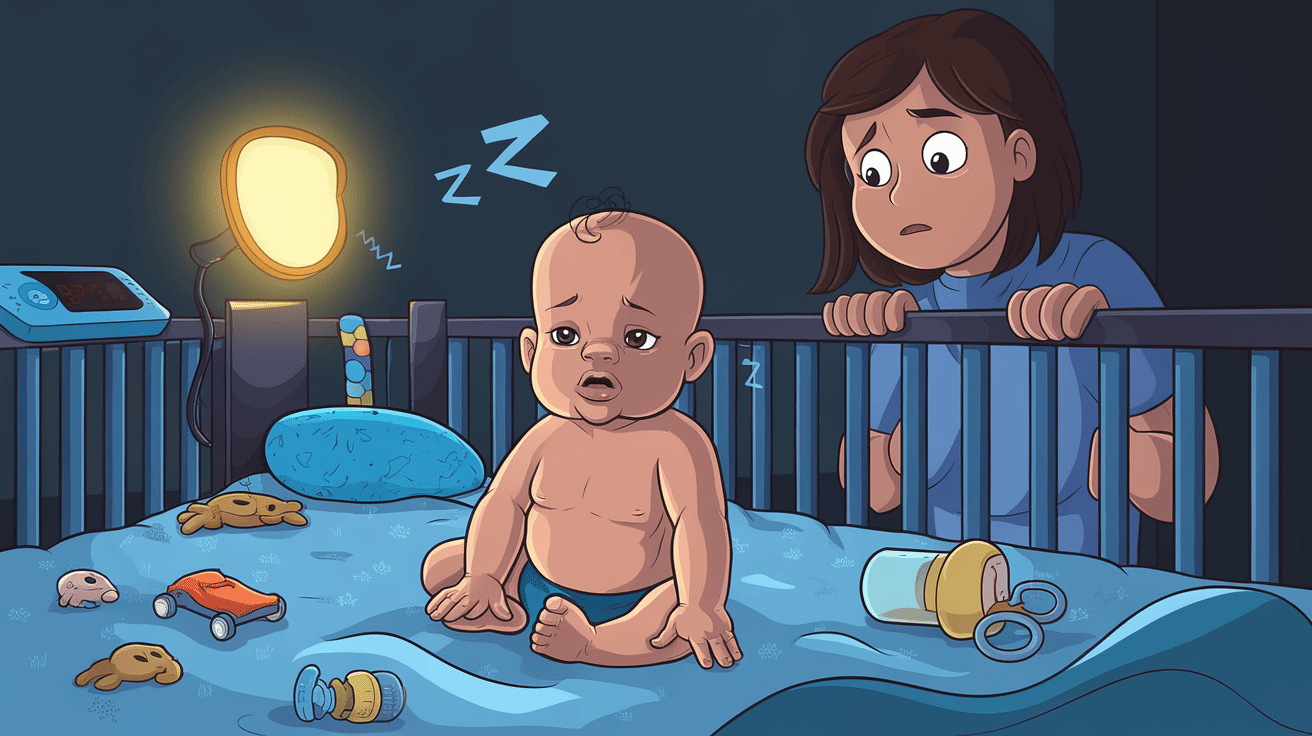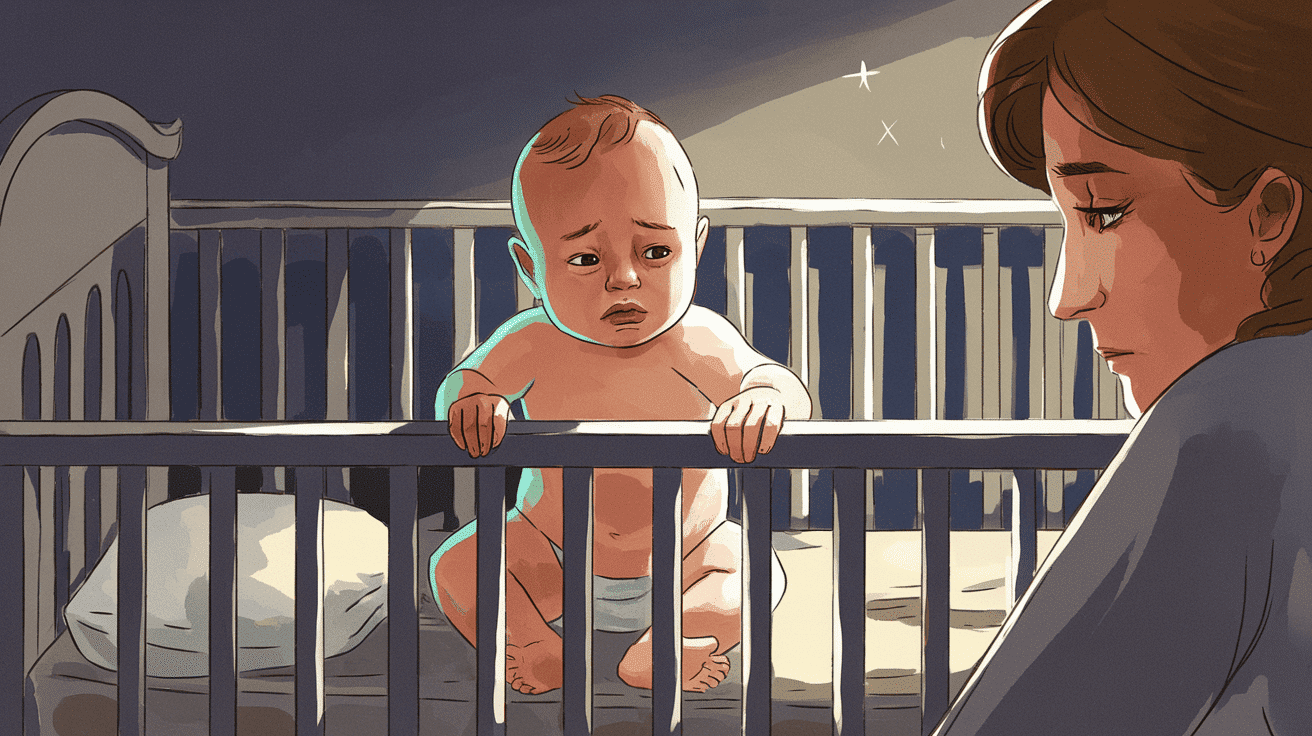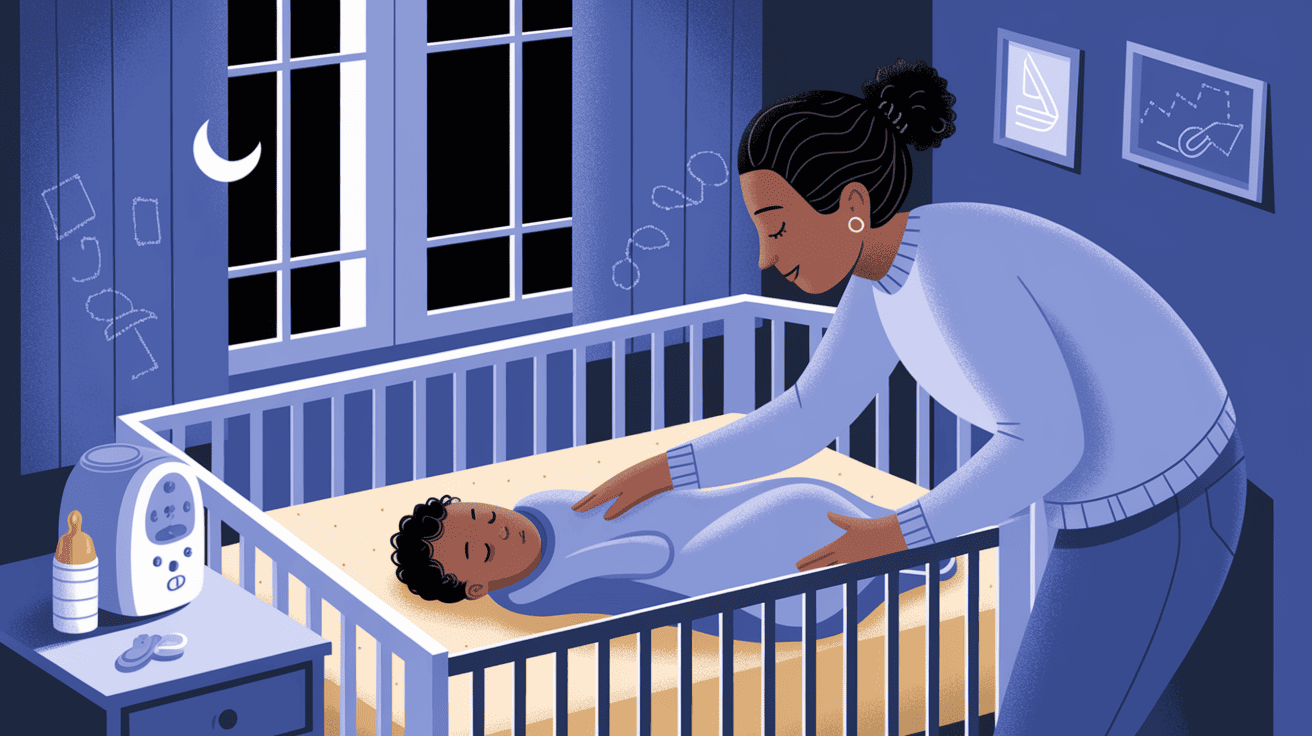
When you think your evening has begun after putting your baby down to sleep, the monitor lights up with cries.
Sound familiar? You’ve just experienced a “false start bedtime” – that frustrating moment when your baby wakes up 30-45 minutes after falling asleep.
This common sleep challenge affects countless families and can leave both parents and babies exhausted and confused. While these sudden early wakings might seem random, they actually follow specific patterns and have identifiable causes.
The good news is that you can understand and overcome false start bedtimes with practical strategies. From adjusting sleep schedules to creating the right environment, small changes can lead to better sleep for your whole family.
Many parents feel defeated after weeks of disrupted evenings, but with the right approach, these challenging sleep patterns can be improved.
Understanding your baby’s unique sleep needs is the first step toward peaceful nights and well-rested days for everyone in your home.
What is a False Start Bedtime?
Many parents know this scenario all too well—you put your baby down for the night and tiptoe out feeling accomplished, only to hear crying 30 minutes later.
This is called a false start bedtime. It happens when your kid appears to fall asleep but wakes up shortly after you leave, typically within that first hour.
False starts differ from normal night wakings because they occur right at the beginning of night sleep, often before you’ve even had time to relax. Your baby might experience this when struggling to transition from light to deep sleep.
Other common causes include overtiredness, not being tired enough, or missing the sleep associations that helped them drift off initially (like rocking or feeding).
Remember, this frustrating experience is incredibly common. Many parents face this same bedtime challenge with their kids.
Common Causes of False Start Bedtimes

False start bedtimes are tough for both you and your baby. Knowing why they happen can help you fix the problem. There are several reasons why your baby might wake up so soon after bedtime.
The good news is that simple changes to your baby’s sleep routine can often help. Let’s look at the most common causes so you can spot what might be happening with your kid.
- Baby is too tired, causing a stress response that wakes them up.
- Baby isn’t tired enough at bedtime.
- Baby misses the rocking, feeding, or other help they had to fall asleep.
- The room is too hot, cold, bright, or noisy.
- The baby is still hungry.
- Naps during the day were too long or at the wrong times.
- Baby is learning new skills that make sleep harder for a while.
- Bedtime routine changes too much from night to night.
The Impact of False Start Bedtimes
False start bedtimes affect the whole family in several ways. For babies, these disrupted sleep beginnings can lead to overtiredness, making it harder to settle back down and potentially causing more night wakings.
Parents often feel the strain, too. Just when you think you can relax or catch up on chores, you’re called back to the nursery. This pattern can leave you feeling frustrated and drained at the end of long days.
Over time, these repeated false starts can create stress around bedtime for everyone. Parents often worry about bedtime, expecting more sleep struggles, and babies can pick up on these feelings.
The good news is that understanding and addressing the causes can lead to smoother bedtimes. Small adjustments to your routine can make a big difference in how well everyone sleeps.
How to Identify a False Start Bedtime?

Spotting a false start bedtime is fairly straightforward once you know what to look for. The most obvious sign is when your baby falls asleep at bedtime but wakes up crying or fussing within 30-45 minutes.
This differs from normal brief stirring between sleep cycles. With false starts, your baby is fully awake and often upset, not just making brief noises before settling again.
You might notice your baby seems confused or puzzled upon waking. They may act as if it’s morning or seem surprised to find themselves in their crib.
The timing is key—false starts happen specifically during the first sleep cycle after bedtime, not later in the night.
Once you’ve seen this pattern a few times, you’ll recognize it immediately and be able to take steps to address the underlying causes.
Tips to Avoid False Start Bedtimes

Preventing false start bedtimes requires some detective work to identify your baby’s specific triggers. With a few adjustments to your routine, you can help your kid transition more smoothly into deeper sleep.
Most solutions focus on timing adjustments or changes to bedtime approaches. These strategies have helped many parents overcome false starts and enjoy more peaceful evenings.
- Adjust bedtime earlier or later by 15-30 minutes based on tiredness cues.
- Create a consistent, calming bedtime routine that signals sleep time.
- Ensure the room is dark with appropriate white noise and a comfortable temperature.
- Consider a dream feed 45 minutes after bedtime to prevent hunger wakings.
- Gradually reduce sleep associations like rocking or feeding to sleep.
- Be patient and consistent—it may take several days to see improvements.
How to Fix a False Start Bedtime?
When your baby wakes up with a false start, stay calm and respond promptly. First, check if basic needs are met—hunger, diaper, temperature—before assuming it’s a sleep issue.
If your baby seems genuinely tired but can’t stay asleep, try keeping the interaction minimal. Keep lights dim, voices soft, and movements slow to maintain the sleepy atmosphere.
For babies who wake alert and happy, you might need to reset. Try a mini bedtime routine—a quick cuddle, another song, or a brief story before placing them back in the crib drowsy but awake.
Consistency is key. Whatever approach you choose, stick with it for at least a week. If false starts persist despite your efforts, consider adjusting bedtime by 15-30 minutes earlier or later to find your baby’s sleep sweet spot.
When to Seek Professional Help?

False start bedtimes sometimes require professional guidance when home strategies aren’t working.
If you’ve tried different approaches for several weeks without success, consider talking to your pediatrician or a sleep consultant. Watch for signs that might suggest more than just sleep issues – such as your baby arching their back, pulling up their legs, or crying intensely during these wakings.
Your pediatrician can check for medical causes, such as reflux or ear infections, that might be disrupting sleep. Sleep consultants offer customized plans based on your baby’s age, temperament, and family’s needs.
Sleep specialists help families tackle these issues every day. Getting support can help both you and your baby find better rest sooner, especially when you’re feeling overwhelmed by ongoing sleep disruptions.
Summing It Up
Dealing with false start bedtimes can test even the most patient parent’s resolve. Remember that this sleep challenge is both common and temporary. Many families report significant improvements after following a consistent approach for just a few weeks.
Pay attention to your baby’s unique sleep cues and patterns to identify the specific causes behind their false start bedtimes.
Small adjustments to timing, sleep environment, or gradually changing how your baby falls asleep often lead to better nights for everyone.
Trust your instincts as a parent, but don’t hesitate to seek professional guidance when needed. Every baby is different, and finding the right solution may take some trial and error.
Ready to tackle your baby’s false start bedtimes? Implement one strategy tonight and track your results over the next week.
